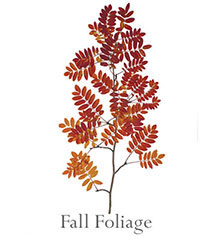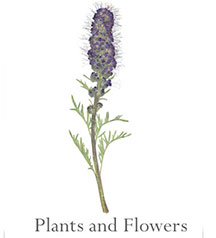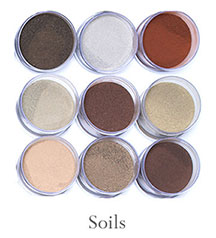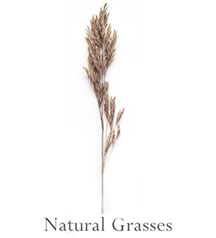 |
FALL FOLIAGE - The variety & vibrancy of color found in fall foliage speaks for itself and was my initial inspiration to collect & preserve some examples. Mountain ash, dogwoods, various maples, aspen, alder,… it’s all amazing color when it goes off! People that I shared my new hobby with were encouraging and that drove me to expand the collection of natural colors to become more full-spectrum while maintaining the focus on Rocky Mountain color. Before long, it was hard to ignore any “color” and for a while, my hiking & mountain biking buddies got tired of me stopping all the time… Lucky for me, my dog Kodi didn’t mind a bit! |
 |
PLANTS & FLOWERS - The plants & flowers begin by displaying just how many shades of green foliage there is and then explode into a full spectrum of bright primary colors in every flavor you can imagine! This category and the fall foliage drew Roper Green to what wasn’t even a completed collection yet. He saw some of the stunning flowers and said, “We need to photograph some of this stuff!” We’ve now photographed most items. It’s been fun to see both women & men equally enjoy these natural colors! Everyone likes and relates to color when it’s one of their favorite flowers that grows in one of their favorite places. Since not everyone who lives near or loves the Rockies gets up into the mountains, I’ve included some domestic flowers for the gardening enthusiast with more to come! |
 |
SOILS - This is a surprisingly crazy category of amazing color and diversity. For collection purposes, I use the term “soils” very loosely. While there are samples of loam, inceptisols & clay, and sand, many of the “soil” samples are actually classified as decomposing rock. For instance, limestone is not only prevalent throughout the Rocky Mountains, it also comes in a mind-boggling array of colors which can be found in some areas in a fully decomposed state with the consistency of soil. With nearly 200 soil colors from the Rocky Mountain corridor & over 50 more from the deserts of the Southwest, this array of colors gets twice as entertaining when a sample of each soil is wet, providing a darker, complimentary shade as well. This brings the number of colors in this category to nearly 500 and is quite a sight to see! Along with several large framed pieces and an overview of the KC, the soils were recently on full display at a downtown Bozeman summer art walk and gained the admiration of many, including Montana State University PhD Tony Hartshorn of the Soils Science Dept. Dr. Hartshorn's interest and approval is much appreciate, and I look forward to sharing my work with them in the future. These soils, like other categories, fall into the sub-category of either being monochromatic or multi-colored. All samples were sifted thoroughly to remove debris and arrive at the truest monochromatic color possible. The small saturated samples of each are periodically rewetted but only using distilled water so as not to alter any colors over time with various minerals found in water that is not distilled. If you like earth tones, here you go! |
 |
ROCKS - As great of colors as rocks and soils represent, maybe the reason that we don’t give them a lot of thought might be that they fit so well into the scenery that they can fade into an often-timed neutral background. Then other times, their colors can jump out and bring you to a stand-still in total awe. Sedimentary (layerd) rocks can provide amazing tone-on-tone colors and with lichen-covered rocks, nature can offer natural combinations that most of us would typically never think of putting together. To me, the rocks and soils are the foundation of outdoor color, but rocks do something that soils can’t do – show the effects that texture & shadow have on color |
 |
NATURAL GRASSES - Whether it’s wildrye, foxtail barley, reedgrass or a hundred other types of natural grasses, they are also an important component of the overall picture of natural color. Without the grasses, much of the landscape would be barren. Something as simple as a Sunday drive through the rural countryside can be an amazing display of late-summer color. |
|

